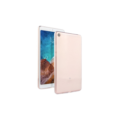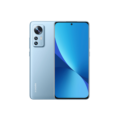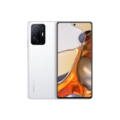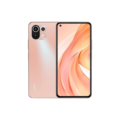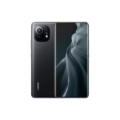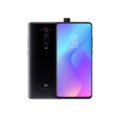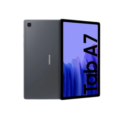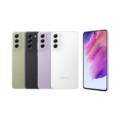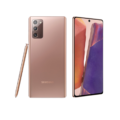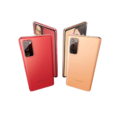Mi Note 10 Lite Harga Malaysia


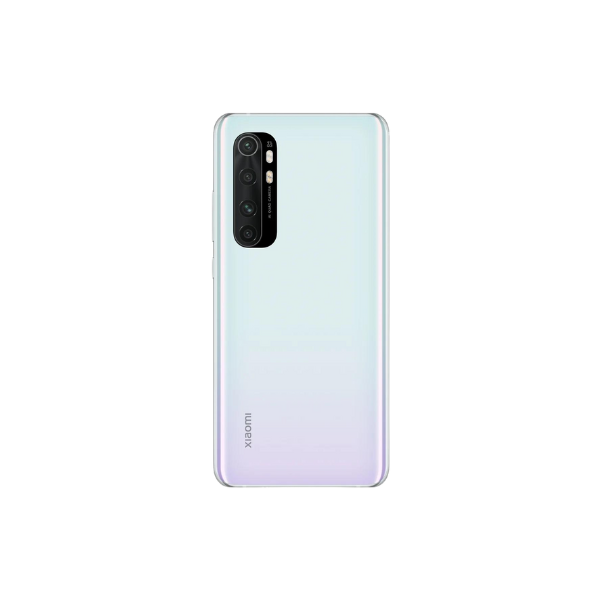
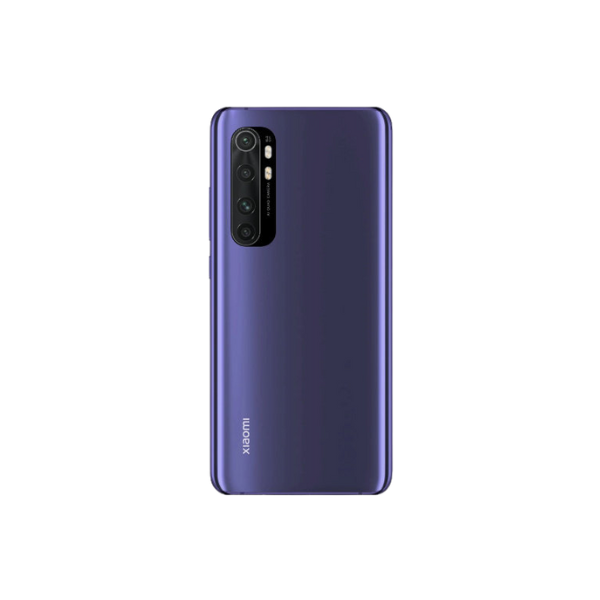
- CPU: Qualcomm SDM730 Snapdragon 730G (8 nm)
- RAM: 6 GB, 8 GB
- Storage: 64 GB, 128 GB
- Display: AMOLED
- Camera: 64 MP Quad Camera
- OS: Android 10, MIUI 12.5 E
- AnTuTu Total Score: 264.493 (v8)
Mi Note 10 Lite Harga Malaysia Spesifikasi Malaysia
General
| Device Type | Smart Phone |
| Model | M2002F4LG, M1910F4G |
| Announced | 30 April, 2020 |
| Released | 09 May, 2020 |
| Status | Available |
| Price | RM1,160 - RM1,899 |
Design
| Type <strong>Design Type</strong> called form factor refers to a mobile phone's size, shape, and style as well as the layout and position of major components of phone. There are three major form factors seen in mobile phones => bar phones, folding phones and sliding phones. | Bar |
| Dimensions | 157.8 x 74.2 x 9.7 mm (6.21 x 2.92 x 0.38 in) |
| Weight | 204 g (7.20 oz) |
| Body Type | Glass front (Gorilla Glass 5), glass back (Gorilla Glass 5), aluminum frame |
| Colors | Midnight Black, Glacier White, Nebula Purple |
Network
| 4G Network | 1, 2, 3, 4, 5, 7, 8, 18, 19, 20, 26, 28, 38, 40, 41 |
| SIM <strong>SIM</strong> (Subscriber Identity Module) is a small card that contains mobile network subscriber's account information. This allows the phone using the card to attach to a mobile network. The SIM card is most commonly associated with GSM and UMTS mobile networks. Moving a SIM card from one phone to another allows a subscriber to switch mobile phones without having to contact their mobile network carrier. SIM cards can also be used by a phone to store limited amounts of data, such as phone numbers and text messages. | Nano SIM |
| Dual SIM | dual stand-by |
Display
| Display Type <strong>Display Technology => </strong> A number of display technologies and types used in mobile phones => TFT (Thin Film Transistor), IPS (In-Place Switching), OLED (Organic Light Emitting Diode), AMOLED (Active-Matrix Organic Light-Emitting Diode), Super AMOLED (an even advanced version of AMOLED), Resistive Touchscreen (Resistive touchscreens contain two layer of conductive material with a very small gap between them which acts as a resistance), Capacitive Touchsceen (Capacitive touchscreen technology consists of a layer of glass coated with a transparent conductor) | AMOLED |
| Size | 6.47 inches, 102.8 cm2 (~87.8% screen-to-body ratio) |
| Resolution | 1080 x 2340 pixels, 19.5:9 ratio |
| Display Colors <strong>Display Colors</strong> is refers to the number of different shades of colors that the screen is capable of displaying => 64K colors, 256K colors and 16 million colors, Obviously 16M is highest available range of colors and better than others. | 16M Colors |
| Pixel Density <strong>Pixel Density (PPI)</strong> is refers to the concentration of pixels on a particular display, measured in pixels per inch (ppi). Pixel density is calculated by dividing the diagonal pixel resolution of a display by its diagonal size, higher pixel density better display quality. | (~398 ppi density) |
| Touch Screen | Yes, Multitouch |
| Display Protection <strong>Display Protection => </strong> Gorilla Glass is a special alkali-aluminosilicate glass shield with exceptional damage resistance that helps protect mobile displays from scratches, drops, and bumps of everyday use, It is always better to go for a smartphone with Gorilla Glass for that added protection and peace of mind. | Corning Gorilla Glass 5 |
| Features |
HDR10 430 nits (typ) |
Camera
| Rear Camera <strong>Camera</strong> is able to capture photographs and usually videos, The most important characteristics of a camera are the resolution (measured in megapixels), lens focus type (fixed or automatic), higher megapixel cameras are known to capture higher quality photos, but not always a good measurement of the photos quality. |
Quad Camera 64 MP, f/1.9, 26mm (wide), 1/1.72", 0.8µm, PDAF, Laser AF 8 MP, f/2.2, (ultrawide), 1/4.0", 1.12µm 2 MP, f/2.4, (macro) 5 MP, f/2.4, (depth) |
| Front Camera | 16 MP, f/2.5, (wide), 1/3.06" 1.0µm |
| Image | 2160p |
| Video | 4K@30fps, 1080p@30/60/120fps, 720p@960fps |
| Camera Features | Quad-LED flash, HDR, panorama |
Software
| Operating System <strong>OS => </strong> Every computer system run on a base software called Operating System (OS). Operating System controls all basic operations of the computer (such as smartphone, PDAs, tablet computers and other handheld devices). The Operating System allows the user to install and run third party applications (apps), apps are used to add new functionality to the device. | Android 10, upgradable to Android 11 |
| User Interface <strong>UI</strong> or user interface of a device is the look and feel of the on-screen menu system. How it works, its color scheme, how it responds to button presses, all of these things are part of the user interface. | MIUI 12.5 E |
Hardware
| Chipset <strong>Chipset</strong> is a group of integrated circuits designed to perform one or a more dedicated functions, often with real time computing constraints, Popular smartphones are equipped with more advanced embedded chipsets that can do many different tasks depending on their programming. | Qualcomm SDM730 Snapdragon 730G (8 nm) |
| CPU <strong>CPU</strong> (Central Processing Unit) mostly known as processors, CPU processes instructions in order to carry out certain functions that make your device operate properly. Processors are often described as the brain of computers, smartphones and tablets, Smartphones and tablets rely on processors to carry out their every task, Processors are an incredibly important factor in selecting any type of computing device, including your smartphone. | Octa-core (2x2.2 GHz Kryo 470 Gold & 6x1.8 GHz Kryo 470 Silver) |
| GPU <strong>GPU</strong> (Graphics Processing Unit) is a single-chip processor designed to rapidly manipulate and alter memory to accelerate the creation of images in a frame buffer intended for output to a display, This includes things such as lighting effects, object transformations, and 3D motion. | Adreno 618 |
| RAM (Memory) <strong>RAM</strong> (Random Access Memory) is a type of computer memory that can be accessed randomly, any byte of memory can be accessed without touching the preceding bytes that allows information to be stored and accessed quickly from random locations. RAM is the most common type of memory found in computer systems, smartphones, tablets and other electronic devices. | 6 GB, 8 GB |
| Internal Storage <strong>Internal Storage</strong> is a data storage space (flash memory) mostly used in smartphones, tablets and other electronic devices where operating system, apps, music, photos, videos, files and other user data Is stored. | 64 GB. 128 GB |
| Card Slot <strong>Memory Card Slot</strong> is a special slot for inserting a memory card. Memory cards allow you to expand the phone's built-in memory, A memory card (sometimes called a flash memory card or a storage card) is a small storage medium used to store data such as text, pictures, audio, and video, for use on small, portable or remote computing devices such as mobile phones, mp3 players, digital cameras. | No |
| Sensors <strong>Sensors</strong> are electronic components that detects and responds to some type of input from the physical environment. The specific input could be light, heat, motion, moisture, pressure and location, The output is generally a signal that is converted to use in computing systems, a location sensor, such as a GPS receiver is able to detect current location of your electronic device. | Fingerprint (under display, optical), accelerometer, gyro, compass |
Battery
| Battery Type <strong>Battery Type => </strong> Cell phones run on various kinds of batteries depending on the manufacturer, phone size or shape and features. There are basically four types of cell phone batteries => Lithium Polymer, Lithium Ion, Nickel Metal Hydride and Nickel Cadmium. | Li-Poly (Lithium Polymer) |
| Placement | non-removable |
| Capacity <strong>Battery Capacity</strong> is a measure (typically in Amp-hr) of the charge stored by the battery, and is determined by the mass of active material contained in the battery. The battery capacity represents the maximum amount of energy that can be extracted from the battery under certain conditions. | 5260 mAh |
| Charging | 30W wired |
Connectivity
| Bluetooth <strong>Bluetooth</strong> is a wireless communications technology for exchanging data between mobile phones, headsets, computers and other network devices over short distances without wires, Bluetooth technology was primarily designed to support simple wireless networking of personal consumer devices. | 5.0, A2DP, LE, aptX HD, aptX Adaptive |
| Wi-fi <strong>Wi-Fi</strong> is a popular wireless networking technology using radio waves to provide high-speed network connections that allows devices to communicate without cords or cables, Wi-Fi is increasingly becoming the preferred mode of internet connectivity all over the world. | Wi-Fi 802.11 a/b/g/n/ac, dual-band, Wi-Fi Direct |
| Wi-fi Hotspot | |
| USB | USB Type-C 2.0 |
| GPS <strong>GPS</strong> The Global Positioning System is a satellite-based radio navigation system, GPS permits users to determine their position, velocity and the time 24 hours a day, in all weather, anywhere in the world, In order to locate your position, your device or GPS receiver must have a clear view of the sky. | GPS, GLONASS, GALILEO, BDS |
| NFC <strong>NFC</strong> (Near field communication) is a set of standards for smartphones and similar devices to establish peer-to-peer radio communications with each other by touching them together or bringing them into proximity, usually no more than a few inches. | |
| Wireless Charging <strong>Wireless Charging</strong> (Inductive Charging) uses an electromagnetic field to transfer energy between two objects. This is usually done with a charging station. Energy is sent through an inductive coupling to an electrical device, which can then use that energy to charge batteries or run the device. | No |
Media
| Loudspeaker | Yes |
| Handsfree | 3.5mm jack |
Dalam beberapa tahun terakhir, jualan Xiaomi telah berkembang dengan jumlah yang besar, termasuk beberapa jenama telefonnya seperti jenama Poco, Mi Note, siri Mi, dan banyak lagi.
Hari ini, kami akan mempersembahkan kepada anda ulasan mengenai Xiaomi Mi Note 10 Lite dan prestasinya berbanding dengan banyak jenama lain, bagaimana prestasinya pada tahun 2024, dan sama ada ia masih berbaloi untuk dibeli pada tahun 2024.
Xiaomi terus menggalakkan jenamanya, terutamanya pada telefon bajet sederhana untuk menjadi lebih berkuasa, dan tetap terjangkau oleh ramai orang.
Ia pastinya salah satu jenama telefon pintar yang menjanjikan hingga hari ini, terutamanya dengan telefon flagshipnya seperti siri Poco, siri Mi, dan Mi Note. Sekarang, inilah ulasan mengenai Xiaomi Mi Note 10 Lite dan bagaimana prestasinya.
Reka Bentuk
Dari segi reka bentuk keseluruhannya, Xiaomi Mi 10T Lite tidak menawarkan peningkatan dalam reka bentuk, kerana ia adalah telefon pintar yang kelihatan agak standard, berbanding dengan banyak telefon pintar lain di pasaran.
Siri Mi 10T mempunyai reka bentuk yang hampir sama, jika bukan sama, dari Mi 10T Lite, hingga ke Mi 10T Pro dan Ultra. Reka bentuk ini menawarkan kaca belakang yang licin, penampilan hitam kosmik, dan reka bentuk yang elegan.
Reka bentuk telefon ini agak berkulit, dengan berat telefon 204g, dan bingkai kaca. Ia mempunyai dimensi 157x74x9.7 mm.
Secara keseluruhannya, ia adalah telefon agak besar, dengan skrin AMOLED, dan sudah dilengkapi dengan kaca Corning Gorilla untuk melindungi panel hadapan dan belakang.
Paparan
Mi Note 10 Lite menawarkan skrin AMOLED, dengan nisbah skrin-ke-tubuh 87.8%. Ia mempunyai resolusi piksel maksimum 1080x2340p, nisbah aspek 19.5:9, dan kedalaman piksel 396 PPI, dan ia boleh menghasilkan lebih dari 1 bilion warna.
Kadar segar maksimum 60 Hz. Ia menawarkan paparan AMOLED yang menarik pada harga bajet yang boleh memberikan transisi lebih lancar dan animasi dalam telefon.
Kamera
Kamera utama belakang mempunyai kamera utama berkuasa 64 MP, dan ia juga disokong oleh tiga kamera sokongan, jadi secara keseluruhan telefon ini mempunyai empat kamera sebagai kamera utama.
Kamera ultralebar dengan 8MP, dan 2 dan 5 MP kamera kedalaman yang boleh memberikan kualiti fotografi yang mendalam, serta tangkapan video. Ia boleh mengambil tangkapan video hingga 4K dengan kadar selesa 30fps.
Bagi kamera selfie, ia hanya mempunyai satu kamera hadapan dengan 16 MP. Ia menawarkan sokongan perisian selfie dan sensor wajah kamera yang menyokong pelbagai keperluan aplikasi lain.
Perisian
Mi Note 10 Lite datang dengan versi Android 10, dan juga datang dengan peningkatan MIUI 10 ke MIUI 12.
Ia disokong dengan generasi terbaru Snapdragon 730G, prosesor prestasi cepat yang akan mencipta kadar fps yang mengagumkan dan permainan yang lebih lancar. Ambil perhatian mengenai pelepasan mi note 10 lite Android 11 di negara anda juga.
Prestasi
Spesifikasi Xiaomi Mi Note 10 Lite disokong oleh salah satu Cip Paling Pantas di pasaran, dengan Snapdragon 730 G, disokong dengan pemproses Octa-core yang boleh mencapai 2.84 GHz pada inti terpantasnya.
Dengan 6 GB RAM yang boleh dinaik taraf menjadi 12 GB pilihan anda. Ia juga datang dengan Android 10, boleh dinaik taraf ke Android 12.
Hayat Bateri
Kapasiti bateri telefon ini mencapai 5260 mAh, ini adalah hayat bateri yang sangat baik yang boleh bertahan sekurang-kurangnya 2 hari dengan penggunaan tidak bergerak. Untuk penggunaan biasa, ia boleh bertahan sekurang-kurangnya 20 jam, dan untuk penggunaan aktif dan intensif, ia boleh bertahan sekurang-kurangnya 7 jam.
Harga
Harga bagi Xiaomi Mi Note 10 Lite mungkin mencapai RM1,160 dan peningkatan tambahan boleh mencapai sekitar RM1,899.
Anda boleh menyemak dan melawat laman web rasmi di Mi Malaysia
Soalan Lazim
Adakah Xiaomi Mi Note 10 Lite mempunyai penyejukan cecair?
Xiaomi Mi Note 10 Lite membawa reka bentuk dan paparan berkualiti baik, untuk membuatnya lebih baik, ia juga yang pertama dalam siri Redmi Note yang turut dilengkapi dengan sistem penyejukan cecair VC terpadu, menjadikannya lebih baik untuk penggunaan yang berpanjangan dan sesi permainan.
Berapakah kadar segar Xiaomi Mi Note 10 Lite?
Ia mempunyai kadar segar maksimum Xiaomi Note 10 Lite 60 Hz, agak rendah berbanding banyak telefon prestasi lain, tetapi ia dijangka daripada siri lite yang datang pada harga yang sangat murah dan terjangkau.
Adakah Xiaomi Mi Note 10 Lite adalah 5G?
Ya, ia menampilkan sokongan 5G pada cip Qualcomm Snapdragon 765, bersedia untuk disambungkan dengan sambungan Nirkabel 5G.

